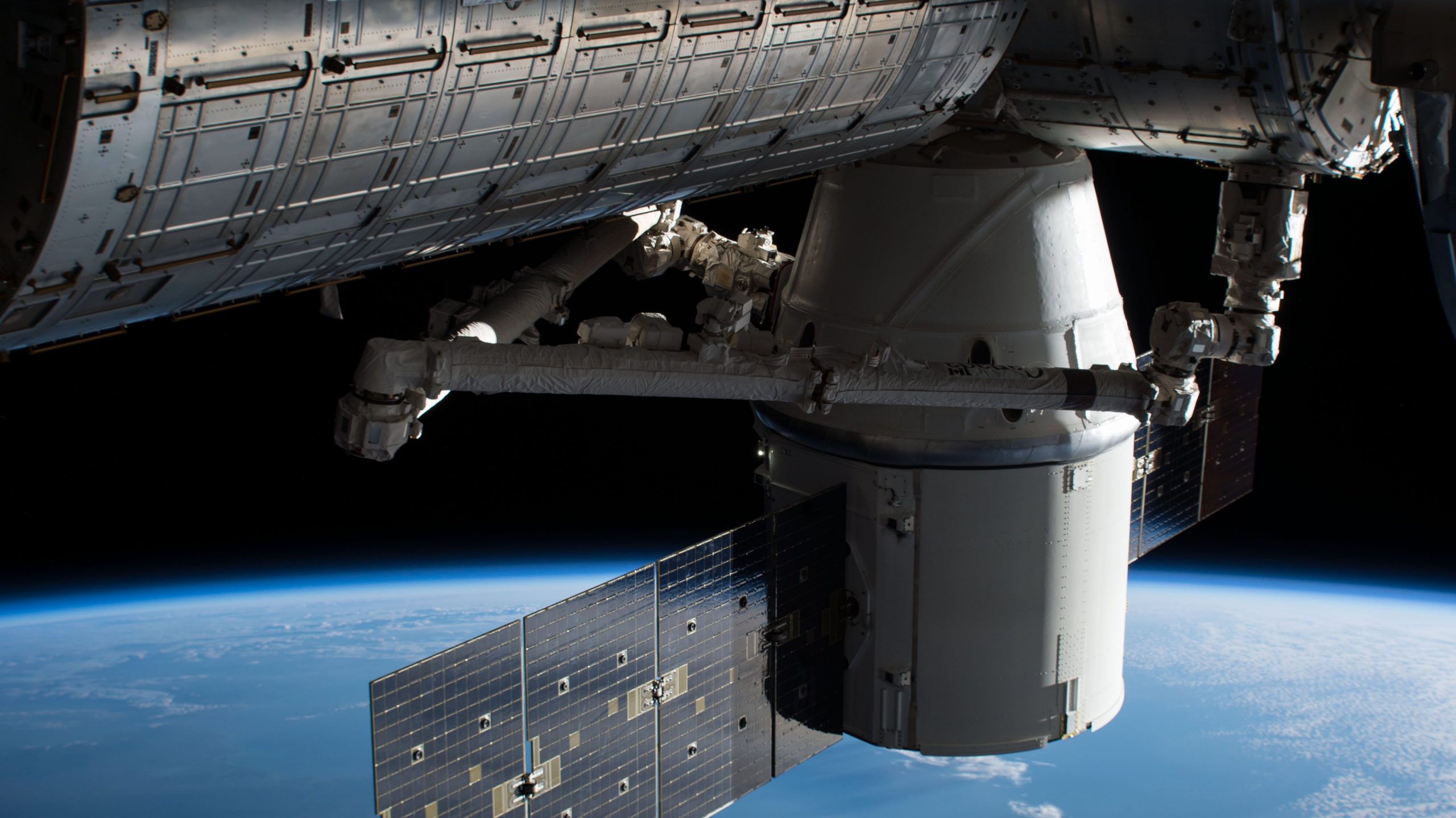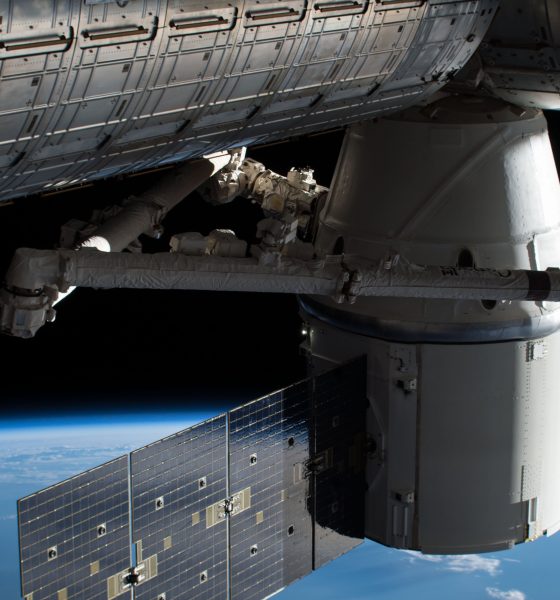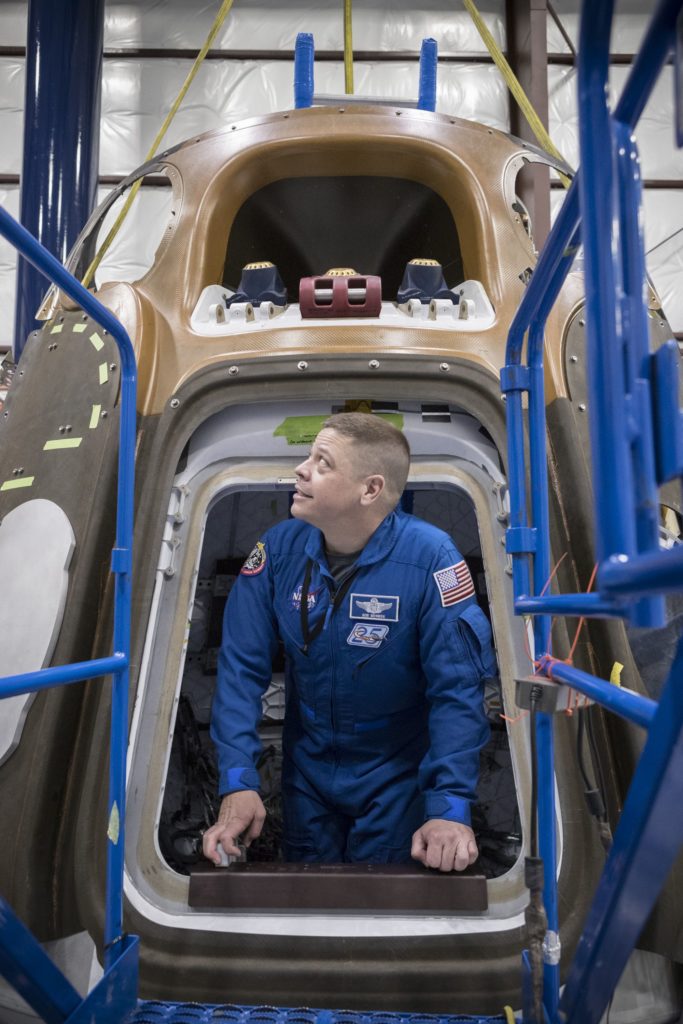

News
SpaceX teases Crew Dragon capsule and spacesuit details in new video
Over the past few weeks, conference presentations given by SpaceX employees like Joy Dunn and Paul Wooster have kicked off with an updated intro reel including unseen slow-motion footage of Falcon Heavy and detailed looks at the company’s spacesuit and Crew Dragon capsule.
Those in the habit of catching SpaceX launches live will be readily familiar with the company’s intro reel – it’s marked the start of live coverage for nearly every webcast in the past three or more years. The current intro reel has remained more or less unchanged since the first successful Falcon 9 booster recovery in December 2015, and this updated intro reel will be a breath of fresh air for what is still admittedly an amazing video. Still, it’s hard to say “no” to slow-motion footage of Falcon Heavy.
Most recently shown at an MIT Media Lab conference during SpaceX Principal Mars Development Engineer Paul Wooster’s presentation, the new reel has – somewhat unsurprisingly – been built around the incredibly successful inaugural Falcon Heavy launch, as well as some more recent footage of the company’s Cargo Dragon docking with the International Space Station. Additional clips show what appears to be details of the finalized Crew Dragon – set to debut in late 2018 – and a closeup of SpaceX’s internally-designed spacesuit. Sticking out as the only truly unusual snippet, the end of the new reel features parts of the animation SpaceX released in 2016 during the debut of their Mars rocket, the Interplanetary Transport System (ITS), which has since been replaced with the similar but different BFR.
While entirely possible that the inclusion of ITS footage in an intro reel clearly updated since 2018 is intentional, it seems more likely that SpaceX has yet to publicize this new video partially because they don’t yet have a similar animation featuring their updated Mars rocket and spaceship. CEO Elon Musk’s recent comments on the encouraging progress being made with the design and construction of the first BFR prototype suggests that such an updated animation could be just around the corner, if not full-up teaser photos of the construction progress. Set to begin suborbital hop testing as early as the first half of 2019 and orbital launches by end of 2020, SpaceX’s Mars ambitions may still feel far away, but the tech that could make them real is already undergoing preliminary construction and testing.
Sooner still is SpaceX’s upcoming debut of Crew Dragon, the spacecraft that will eventually both carry astronauts to the ISS and later replace Cargo Dragon. Initially intended to land near the launch pad on legs, akin to Falcon 9, SpaceX has since canceled that work, largely due to numerous delays that would have almost certainly been incurred in the process of NASA certification of such a new and unproven technology. Instead, Musk made it clear that SpaceX would instead put its time, energy, and money into the development of BFR and BFS, sidestepping NASA’s sometimes-smothering and counterproductive paternalism for the time being.
Crew Dragon will instead be recovered after landing in the ocean, a disappointing concession that is at least partially cushioned by SpaceX’s recent successes and growing expertise with the reuse of their similarly sea-recovered Cargo Dragons. While ocean-recovery certainly won’t lend itself to ease of reuse quite as readily as powered landings, SpaceX will likely be able to significantly drop the cost of Crew Dragon launches in the future by efficiently refurbishing each recovered capsule. Less likely but still a possibility, the company could adopt something similar to the fairing-catcher Mr Steven – essentially a giant net aboard a highly-maneuverable boat – to recover Crew Dragon without submerging the spacecraft in saltwater. As of March 2018, at least according to NASA’s Kennedy Space Center director, SpaceX is still on track to conduct its first uncrewed launch of Crew Dragon as early as August 2018, with the first crewed mission following in December 2018 if all goes well.
- ITS was much wider and taller than the updated BFR, making it considerably easier to develop. (SpaceX)
- BFR’s booster and spaceship, tiny human for scale. (SpaceX)
- Astronaut Bob Behnken emerges from the hatch of a SpaceX Crew Dragon spacecraft in manufacturing at SpaceX’s headquarters and factory in Hawthorne, CA. (SpaceX)
SpaceX’s spacesuit is a critical component of their crewed spaceflight efforts, and has been designed and built in-house to ensure that astronauts can survive the emergency depressurization of a Crew Dragon capsule, evidenced by Musk’s recent suggestions that senior suit engineers successfully survived stints in a vacuum chamber while wearing it. Thanks to the staggering success of Falcon Heavy and its iconic Starman and Tesla Roadster payload, SpaceX’s spacesuit will undoubtedly be a badge of honor for all future astronauts who fly aboard Crew Dragon.

Starman gives one final farewell to Earth as he departs for deep space aboard Musk’s Tesla Roadster. (SpaceX)

News
Tesla FSD fleet is nearing 7 billion total miles, including 2.5 billion city miles
As can be seen on Tesla’s official FSD webpage, vehicles equipped with the system have now navigated over 6.99 billion miles.

Tesla’s Full Self-Driving (Supervised) fleet is closing in on almost 7 billion total miles driven, as per data posted by the company on its official FSD webpage.
These figures hint at the massive scale of data fueling Tesla’s rapid FSD improvements, which have been quite notable as of late.
FSD mileage milestones
As can be seen on Tesla’s official FSD webpage, vehicles equipped with the system have now navigated over 6.99 billion miles. Tesla owner and avid FSD tester Whole Mars Catalog also shared a screenshot indicating that from the nearly 7 billion miles traveled by the FSD fleet, more than 2.5 billion miles were driven inside cities.
City miles are particularly valuable for complex urban scenarios like unprotected turns, pedestrian interactions, and traffic lights. This is also the difference-maker for FSD, as only complex solutions, such as Waymo’s self-driving taxis, operate similarly on inner-city streets. And even then, incidents such as the San Francisco blackouts have proven challenging for sensor-rich vehicles like Waymos.
Tesla’s data edge
Tesla has a number of advantages in the autonomous vehicle sector, one of which is the size of its fleet and the number of vehicles training FSD on real-world roads. Tesla’s nearly 7 billion FSD miles then allow the company to roll out updates that make its vehicles behave like they are being driven by experienced drivers, even if they are operating on their own.
So notable are Tesla’s improvements to FSD that NVIDIA Director of Robotics Jim Fan, after experiencing FSD v14, noted that the system is the first AI that passes what he described as a “Physical Turing Test.”
“Despite knowing exactly how robot learning works, I still find it magical watching the steering wheel turn by itself. First it feels surreal, next it becomes routine. Then, like the smartphone, taking it away actively hurts. This is how humanity gets rewired and glued to god-like technologies,” Fan wrote in a post on X.
News
Tesla starts showing how FSD will change lives in Europe
Local officials tested the system on narrow country roads and were impressed by FSD’s smooth, human-like driving, with some calling the service a game-changer for everyday life in areas that are far from urban centers.

Tesla has launched Europe’s first public shuttle service using Full Self-Driving (Supervised) in the rural Eifelkreis Bitburg-Prüm region of Germany, demonstrating how the technology can restore independence and mobility for people who struggle with limited transport options.
Local officials tested the system on narrow country roads and were impressed by FSD’s smooth, human-like driving, with some calling the service a game-changer for everyday life in areas that are far from urban centers.
Officials see real impact on rural residents
Arzfeld Mayor Johannes Kuhl and District Administrator Andreas Kruppert personally tested the Tesla shuttle service. This allowed them to see just how well FSD navigated winding lanes and rural roads confidently. Kruppert said, “Autonomous driving sounds like science fiction to many, but we simply see here that it works totally well in rural regions too.” Kuhl, for his part, also noted that FSD “feels like a very experienced driver.”
The pilot complements the area’s “Citizen Bus” program, which provides on-demand rides for elderly residents who can no longer drive themselves. Tesla Europe shared a video of a demonstration of the service, highlighting how FSD gives people their freedom back, even in places where public transport is not as prevalent.
What the Ministry for Economic Affairs and Transport says
Rhineland-Palatinate’s Minister Daniela Schmitt supported the project, praising the collaboration that made this “first of its kind in Europe” possible. As per the ministry, the rural rollout for the service shows FSD’s potential beyond major cities, and it delivers tangible benefits like grocery runs, doctor visits, and social connections for isolated residents.
“Reliable and flexible mobility is especially vital in rural areas. With the launch of a shuttle service using self-driving vehicles (FSD supervised) by Tesla in the Eifelkreis Bitburg-Prüm, an innovative pilot project is now getting underway that complements local community bus services. It is the first project of its kind in Europe.
“The result is a real gain for rural mobility: greater accessibility, more flexibility and tangible benefits for everyday life. A strong signal for innovation, cooperation and future-oriented mobility beyond urban centers,” the ministry wrote in a LinkedIn post.
News
Tesla China quietly posts Robotaxi-related job listing
Tesla China is currently seeking a Low Voltage Electrical Engineer to work on circuit board design for the company’s autonomous vehicles.

Tesla has posted a new job listing in Shanghai explicitly tied to its Robotaxi program, fueling speculation that the company is preparing to launch its dedicated autonomous ride-hailing service in China.
As noted in the listing, Tesla China is currently seeking a Low Voltage Electrical Engineer to work on circuit board design for the company’s autonomous vehicles.
Robotaxi-specific role
The listing, which was shared on social media platform X by industry watcher @tslaming, suggested that Tesla China is looking to fill the role urgently. The job listing itself specifically mentions that the person hired for the role will be working on the Low Voltage Hardware team, which would design the circuit boards that would serve as the nervous system of the Robotaxi.
Key tasks for the role, as indicated in the job listing, include collaboration with PCB layout, firmware, mechanical, program management, and validation teams, among other responsibilities. The role is based in Shanghai.
China Robotaxi launch
China represents a massive potential market for robotaxis, with its dense urban centers and supportive policies in select cities. Tesla has limited permission to roll out FSD in the country, though despite this, its vehicles have been hailed as among the best in the market when it comes to autonomous features. So far, at least, it appears that China supports Tesla’s FSD and Robotaxi rollout.
This was hinted at in November, when Tesla brought the Cybercab to the 8th China International Import Expo (CIIE) in Shanghai, marking the first time that the autonomous two-seater was brought to the Asia-Pacific region. The vehicle, despite not having a release date in China, received a significant amount of interest among the event’s attendees.











